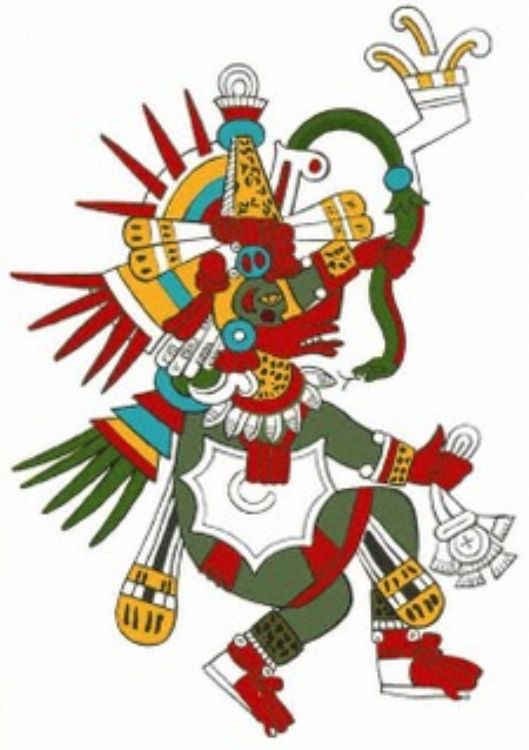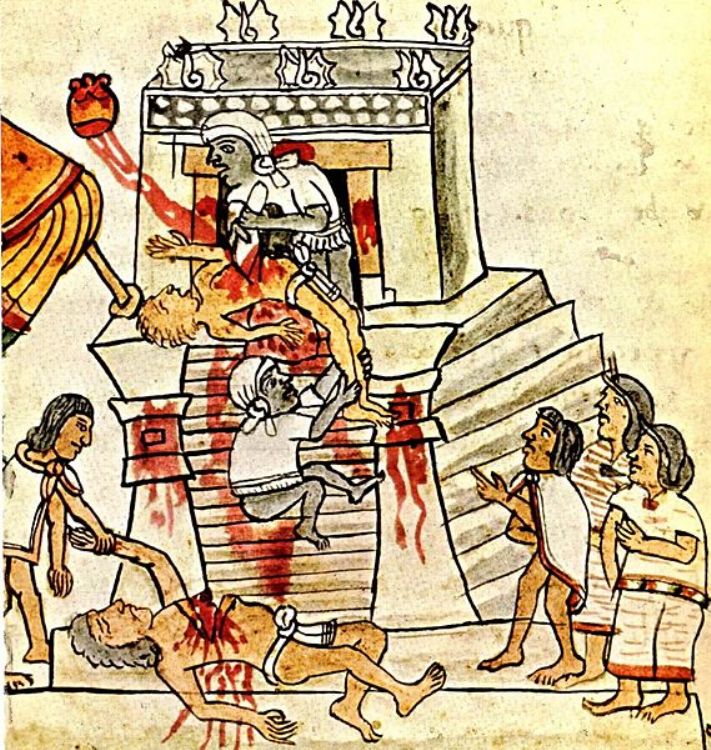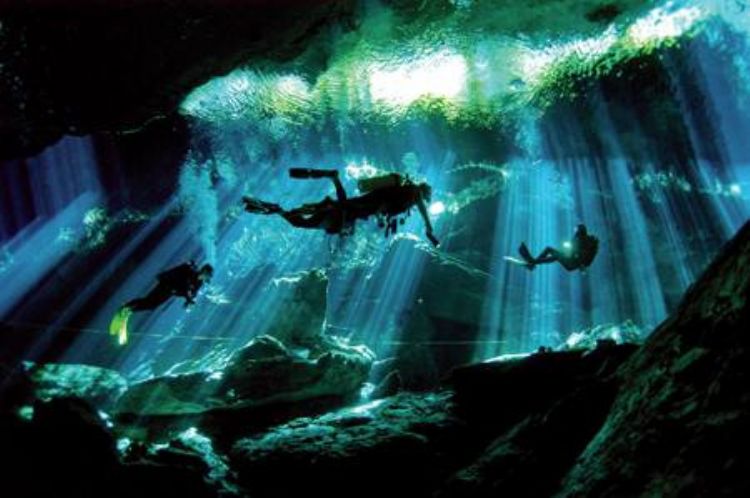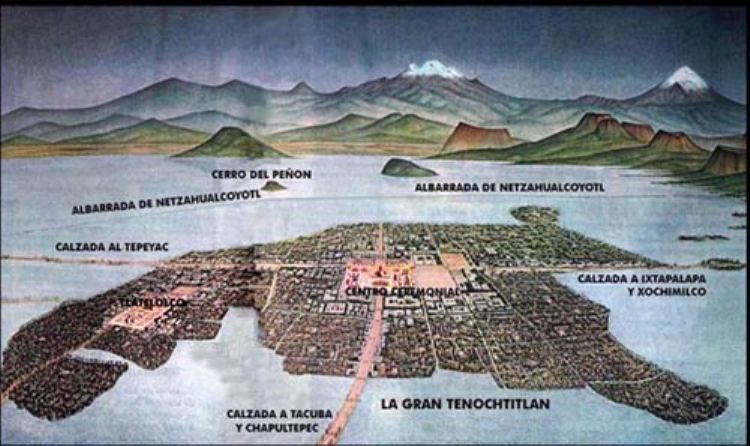The Mexica Civilization and their Sculptures
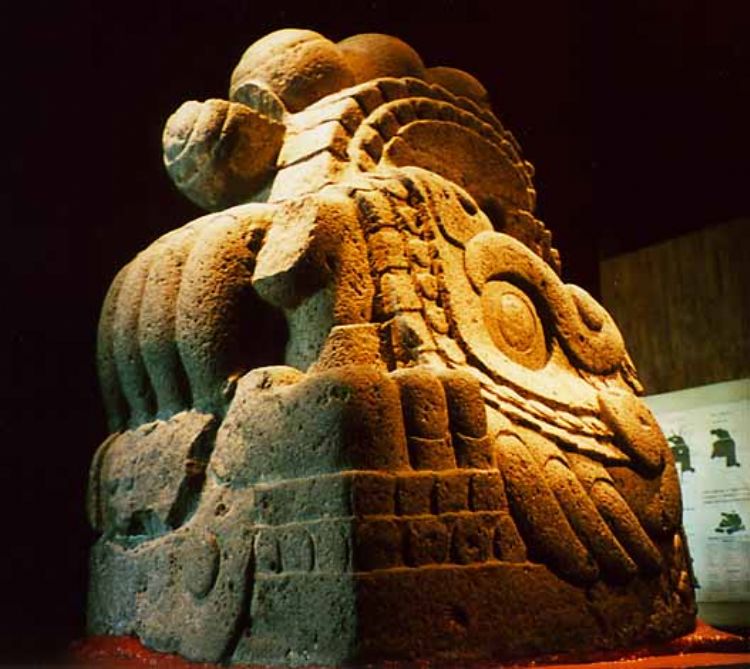
The Mexica called themselves original from the mythological region of Aztlán âthe place of the seven cavesâ. After a pilgrimage that lasted more than 200 years, in the year 1325 A.D. they found their final destination; where they found the sign of Huitzilopochtliâs prophecy, an eagle standing on a cactus while devouring a snake.
The Mexica era lasted from 1250 to 1521 A.D., militarism and war were present in all their activities. Outstanding sculptors, they skillfully worked jade, gold and silver to create ostentatious jewels representing their gods.
The greatest collection of Mexica sculptures is exhibited in the largest hall of the National Anthropology and History Museum. Prized above all is a cylindrical monolith with the Sun surrounded by representations of their main conquests, defeated by the powerful armies of Tenochtitlan.
The sculpture monument that best identifies the Mexica is the Stone of the Sun, a basalt disc with inscriptions related to their cosmogony, measuring 3.60 meters in diameter, 122 centimeters in thickness and weighting 24 tons.
Built in 1479, it was buried during the Conquest, where it remained until it was found in Mexico Cityâs main plaza, on December 1790. Currently, it is gloriously exhibited in the National Anthropology and History Museum and inscribed on many Mexican coins.
For its symbolic content, with the names of the days and cosmogony suns, it has come to be known as the Aztec Calendar. In truth, it is a great altar for sacrifice that remained unfinished because it broke, from one side to the center of the piece. These creations in stone served as altars for the encounters between prisoners and warriors, they were used for sacrificing and skinning the victims.
In the center of the Stone of the Sun is the king star with claws holding a human heart and a tongue in the form of a knife, expressing the need of human sacrifice for continuing solar movement. It is surrounded by the four eras prior to the Fifth Sun, inscribed in a twenty day sequence; marked by four sunrays and sacrificial barbs. Surrounding the Sun are the two snakes of fire that carry it throughout the universe.
The Stone of the Sun was probably called âOllin Tonatiuhâ in Nahuatl, meaning solar movement, evidence of the geocentric vision of this great civilization. It contains pictographs representing the way the Mexica measured time, after centuries of astronomic observation.
The Stone of the Sun has inscribed the four cardinal points and the 4 Jaguar, the day when he first era ended, when monsters came out from deep within the Earth and devoured all the people. 4 Wind is present to remind us that after 364 years of hurricanes, those who didnât perish were turned into monkeys. 4 Water lasted 676 years, ending when everyone was imprisoned by water and turned into fish.
For the Mexica leaders, it was very important to leave evidence of their existence, for which they built their Great Temple many times, decorating it with human sculptures, snakes, eagles and jaguars. They also carved headstones with important dates, where they inscribed their feats.
They built monumental sculptures to communicate their religious legends, like the huge head of the Moon goddess, narrating the story of how she was defeated by her brother, the Sun. Now it is proudly displayed in the Great Temple Museum.
In many of these sculptures are images related to death and the underworld, representing skeletons with hands as animal claws ready to attack. They ruled the underworld, the final destination where we lose our skin and only our bones are left.
Of Tlaloc, god of the rain, there is an impressive mask with huge fangs coming out of a monstrous mouth. He was associated to other natural phenomenon, such as thunder and lighting. It was believed that this god kept water in the sacred vessels they sculpted from volcanic rock, always decorated with Tlalocâs mask.
The Mexica pieced together strips of clay to make vessels with detailed geometric designs. This civilization didnât know iron or copper yet. Their tools were made of obsidian and by the time of the Spanish Conquest, they had started to experiment with copper. They carved stones for buildings by using ropes and an abrasive made of sand and water. Their axes were made of stone plates held to wooden sticks.
The Mexica produced monumental stone sculptures with an excellent capacity for abstraction, as well as a realism revealing the internal and external character of the deities, animals or persons they represented. Most sculptures were destined to architectural decoration and altars for human sacrifice, where they kept the hearts and blood of the victims.
Artículo Producido por el Equipo Editorial Explorando México.
Copyright Explorando México, Todos los Derechos Reservados.
Foto: Islc.net

